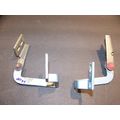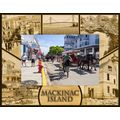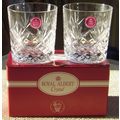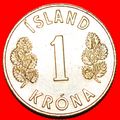Kirchner, Ernst Ludwig - Frauen auf der Strasse / Ladies on the Street -art card
- Condition : Used
- Dispatch : 2 Days
- Brand : None
- ID# : 137278599
- Quantity : 1 item
- Views : 1632
- Location : United Kingdom

- Seller : justthebook (+1703)
- Barcode : None
- Start : Mon 23 Feb 2015 18:41:16 (EDT)
- Close : Run Until Sold
- Remain : Run Until Sold
Checks/Cheques
 for 1 item(s) edit
for 1 item(s) edit
Shipping Calculator
More Listings from This Seller view all
Seller's Description
- Art Postcard
- Work of art title: Ladies on the Street / Frauen auf der Strasse
- Artist (if known): Ernst Ludwig Kirchner
- Media or other details: painting
- Publisher / Gallery: Stadisches Museum Wuppertal / Dr. de Neues Co. GmbH
- Postally used: no
- Stamp & postmark details (if relevant): n/a
- Size: modern
- Notes & condition details:
NOTES:
Size: 'Modern' is usually around 6in x 4in / 'Old Standard' is usually around 5 1/2in x 3 1/2in. Larger sizes mentioned, but if you need to know the exact size please ask.
All postcards are not totally new and are pre-owned. It's inevitable that older cards may show signs of ageing and use, particularly sent through the post. Any faults other than normal ageing are noted.
Stock No.: A504
------------------------------------------------
Postage & Packing:
Postage and packing charge should be showing for your location (contact if not sure).
No additional charges for more than one postcard. You can buy as many postcards from me as you like and you will just pay the fee above once. Please wait for combined invoice. (If buying postcards with other things such as books, please contact or wait for invoice before paying).
Payment Methods:
UK - PayPal, Cheque (from UK bank) or postal order
Outside UK: PayPal ONLY (unless otherwise stated) please. NO non-UK currency checks or money orders (sorry).
NOTE: All postcards are sent in brand new stiffened envelopes which I have bought for the task. These are specially made to protect postcards and you may be able to re-use them. In addition there are other costs to sending so the above charge is not just for the stamp!
I will give a full refund if you are not fully satisfied with the postcard.
----------------------------------------------
Text from the free encyclopedia WIKIPEDIA may appear below to give a little background information:
*************
Ernst Ludwig Kirchner (6 May 1880 – 15 June 1938) was a German expressionist painter and printmaker and one of the founders of the artists group Die Brücke or ""The Bridge"", a key group leading to the foundation of Expressionism in 20th-century art. He volunteered for army service in the First World War, but soon suffered a breakdown and was discharged. In 1933, his work was branded as ""degenerate"" by the Nazis and in 1937 over 600 of his works were sold or destroyed. In 1938 he committed suicide by gunshot.[1]
Ernst Ludwig Kirchner was born in Aschaffenburg, Bavaria.[2] His parents were of Prussian descent and his mother was a descendent of the Huguenots, a fact to which Kirchner often referred.[3] As Kirchner's father searched for a job, the family moved frequently and Kirchner attended schools in Frankfurt and Perlen until his father earned the position of Professor of Paper Sciences at the college of technology in Chemnitz, where Kirchner attended secondary school.[3] Although Kirchner's parents encouraged his artistic career they also wanted him to complete his formal education so in 1901, he began studying architecture at the Königliche Technische Hochschule (royal technical university) of Dresden. The institution provided a wide range of studies in addition to architecture, such as freehand drawing, perspective drawing and the historical study of art.[4] He became close friends there with Fritz Bleyl, whom he met during the first term.[5] They discussed art together and also studied nature,[5] having a radical outlook in common.[6] Kirchner continued studies in Munich 1903–1904, returning to Dresden in 1905 to complete his degree.[2]
In 1905, Kirchner, along with Bleyl and two other architecture students, Karl Schmidt-Rottluff and Erich Heckel, founded the artists group Die Brücke (""The Bridge""). From then on, he committed himself to art.[2] The group aimed to eschew the prevalent traditional academic style and find a new mode of artistic expression, which would form a bridge (hence the name) between the past and the present.[6] They responded both to past artists such as Albrecht Dürer, Matthias Grünewald and Lucas Cranach the Elder, as well as contemporary international avant-garde movements.[6] As part of the affirmation of their national heritage, they revived older media, particularly woodcut prints.[6]
Their group was one of the seminal ones, which in due course had a major impact on the evolution of modern art in the 20th century and created the style of Expressionism.[7] The group met initially in Kirchner's first studio, which had previously been a butcher's shop. Bleyl described it as:
| “ | that of a real bohemian, full of paintings lying all over the place, drawings, books and artist’s materials — much more like an artist’s romantic lodgings than the home of a well-organised architecture student.[6] | ” |
Kirchner's studio became a venue which overthrew social conventions to allow casual love-making and frequent nudity.[6] Group life-drawing sessions took place using models from the social circle, rather than professionals, and choosing quarter-hour poses to encourage spontaneity.[6] Bleyl described one such model, Isabella, a fifteen-year-old girl from the neighbourhood, as ""a very lively, beautifully built, joyous individual, without any deformation caused by the silly fashion of the corset and completely suitable to our artistic demands, especially in the blossoming condition of her girlish buds.""[8]
The group composed a manifesto, written by Kirchner, stated that ""Anyone who directly and honestly reproduces that force which impels him to create belongs to us.""
In September and October 1906, the first group exhibition was held, focused on the female nude, in the showroom of K.F.M. Seifert and Co. in Dresden.[8]
In 1906, he met Doris Große, who was his favoured model until 1911.[2] Between 1907 and 1911, he stayed during the summer at the Moritzburg lakes and on the island of Fehmarn (which he revisited until 1914) with other Brücke members; his work featured the female nude in natural settings.[2] In 1911, he moved to Berlin, where he founded a private art school, MIUM-Institut, in collaboration with Max Pechstein with the aim of promulgating ""Moderner Unterricht im Malen"" (modern teaching of painting). This was not a success and closed the following year, when he also began a relationship with Erna Schilling that lasted the rest of his life.[2]
In 1913, his writing of Chronik der Brücke (Brücke chronicle) led to the ending of the group. At this time, he established an individual identity with his first solo exhibition, which took place at the Essen Folkwang Museum.[2] During the next two years, he painted a series of ""Großstadtbilder"" (metropole pictures) showing the streets of Berlin,[2] with the central characters of street walkers.
At the onset of the First World War in September 1914, Kirchner volunteered for military service. He was sent to Halle an der Saale to train as a driver in the reserve unit of the 75 Mansfeld Field Artillery Regiment.[3] Kirchner's riding instructor, Professor Hans Fehr, arranged for Kirchner to be discharged after a mental breakdown.[3] Kirchner then returned to Berlin and continued to work, producing many paintings including Self Portrait as a Soldier (1915), until he was admitted to Dr Kohnstamm’s sanatorium in Königstein in Taunus in December 1915 where he was diagnosed with a strong dependency on Veronal and alcoholism.[3] In a letter to Dr. Karl Hagemann, a friend and patron, Kirchner writes: ""After lengthy struggles I now find myself here for a time to put my mind into some kind of order. It is a terribly difficult thing, of course, to be among strangers so much of the day. But perhaps I’ll be able to see and create something new. For the time being, I would like more peace and absolute seclusion. Of course, I long more and more for my work and my studio. Theories may be all very well for keeping a spiritual balance, but they are grey and shadowy compared with work and life"".[3] Throughout 1916, Kirchner periodically returned to Berlin for a few weeks at a time to continue his work at his studio.[3] Kirchner produced many oil paintings and drawings and sold many works during 1916 and was doing well financially.[3] In December, he suffered from a nervous breakdown and was admitted to Dr Edel’s sanatorium in Berlin Charlottenburg.[3]
type=printed postcards
number of items=single
postage condition=unposted
size=continental/ modern (150x100mm)
theme=artists signed
sub-theme=art
Listing Information
| Listing Type | Gallery Listing |
| Listing ID# | 137278599 |
| Start Time | Mon 23 Feb 2015 18:41:16 (EDT) |
| Close Time | Run Until Sold |
| Starting Bid | Fixed Price (no bidding) |
| Item Condition | Used |
| Bids | 0 |
| Views | 1632 |
| Dispatch Time | 2 Days |
| Quantity | 1 |
| Location | United Kingdom |
| Auto Extend | No |




















